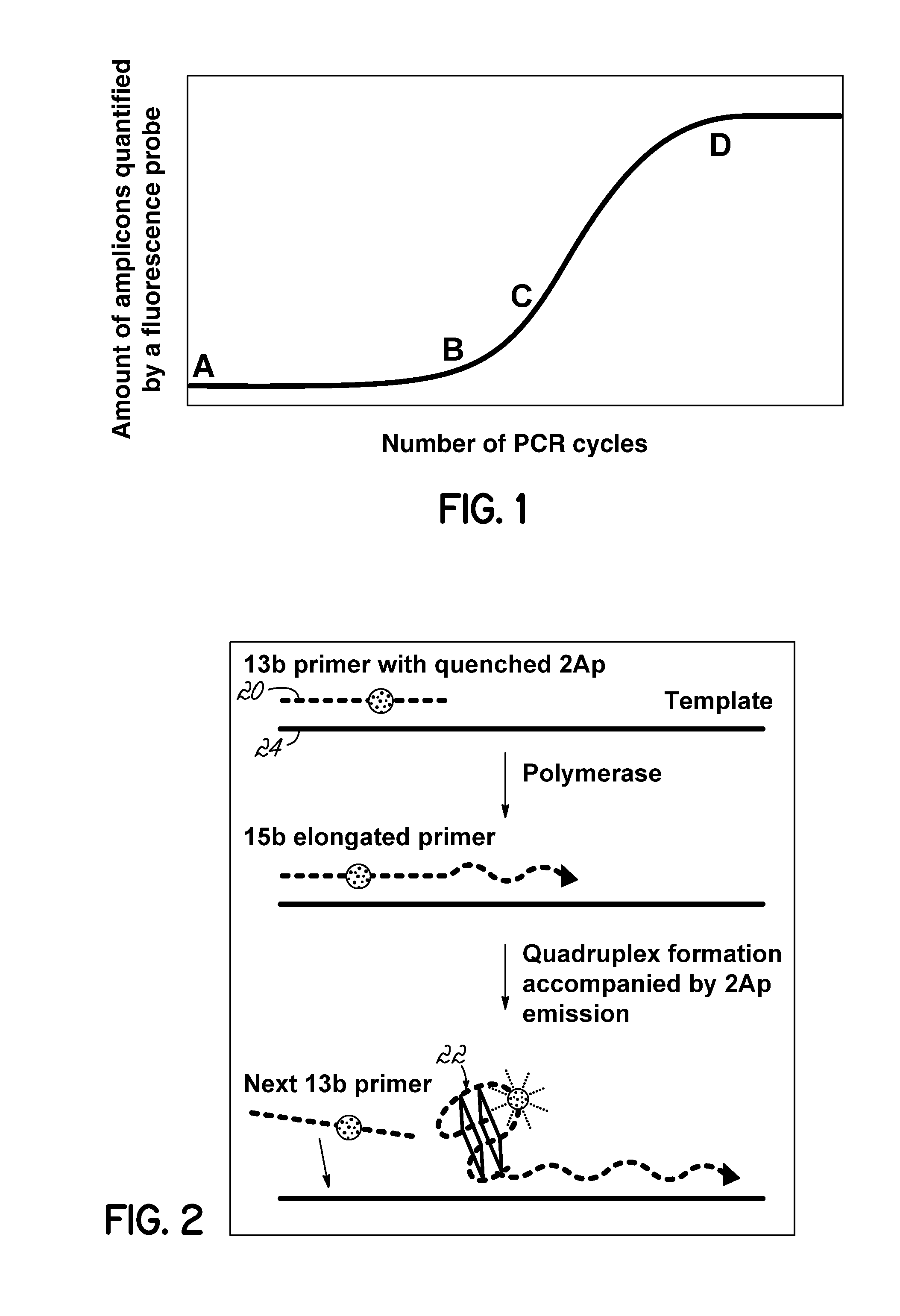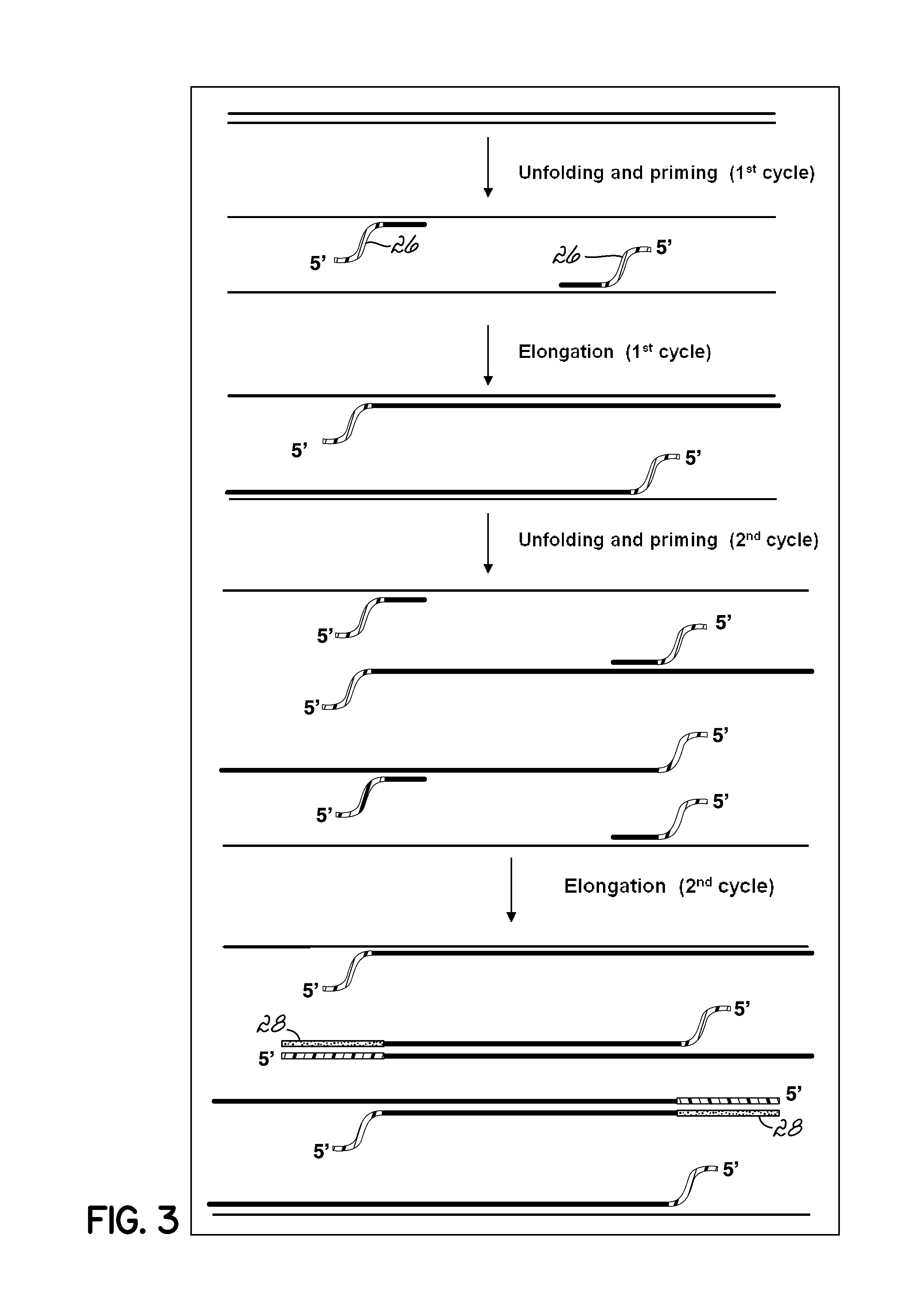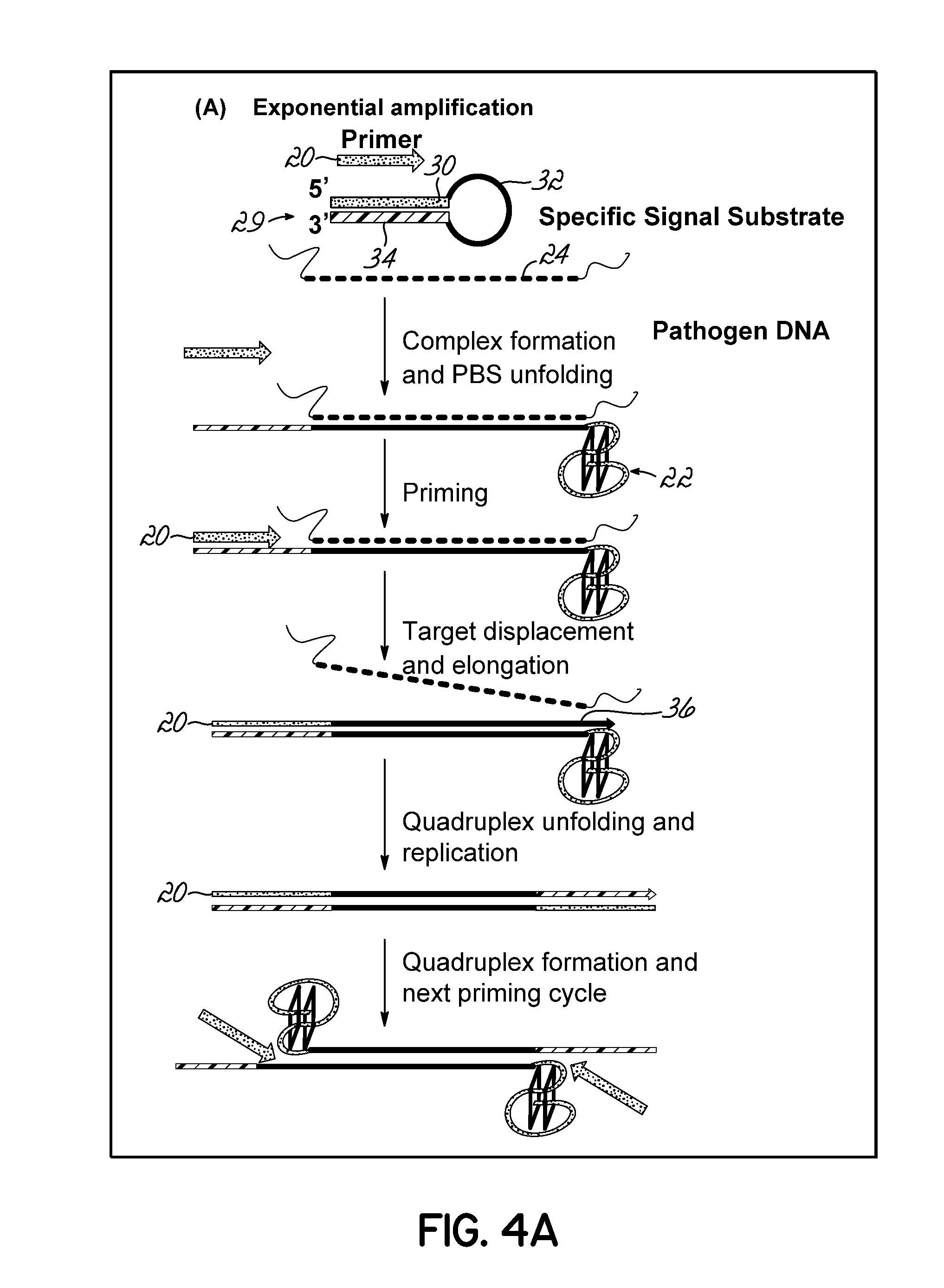Isothermal Amplification of Nucleic Acid, and Library Preparation and Clone Generation in Sequencing
a technology of isothermal amplification and nucleic acid, which is applied in the direction of library creation, library screening, library member identification, etc., can solve the problems of limited pcr, and achieve the effect of increasing the multiplex capability of dspa, increasing materials, time and expens
- Summary
- Abstract
- Description
- Claims
- Application Information
AI Technical Summary
Benefits of technology
Problems solved by technology
Method used
Image
Examples
example 1
[0238]This Example describes development of primers for use in an isothermal amplification process. As described above, the primers used in various embodiments of such a process may be of a sequence that does not initially form a dissociative structure (such as a quadruplex), but that will do so upon extension of the sequence during amplification. One exemplary embodiment of such a primer sequence is G3T-ss13.
[0239]Role of Cations and Terminal Guanines in Quadruplex Formation.
[0240]FIG. 9 demonstrates fluorescence unfolding experiments of G3T-ss15, G3T-ss14, and G35-ss13. Unfolding of G3T-ss15 was performed in the presence of 50 mM monovalent cations, Na+ (-∘-), K+ (black line) and Cs+ (--). In the case of Na+ ions the melting curve reveals the sigmoidal behavior characteristic of monophasic transition with Tm ˜45° C. The transition corresponds to unfolding of the quadruplex, which is accompanied by quenching of 2Ap fluorescence by adjacent guanines in the unfolded quadruplex. As e...
example 2
[0247]In this prophetic example, the DNA stem-loop 5′GGGAGGGCGGGTGGG(T)14GGCCCGCCCTC (underline=quadruplex forming sequence, bold=loop, italic=stem) [SEQ. ID. NO. 15] will be studied in the absence and the presence of target sequence, 5′CC(A)14CCCA [SEQ. ID. NO. 16]. The estimated Tms and free energies are: 51° C. and −8 kcal / mol for the stem-loop and 72° C. and −15 kcal / mol for the bimolecular complex [Zuker, M. (2003) Mfold web server for nucleic acid folding and hybridization prediction. Nucleic acids research, 31, 3406-3415]. Thus, it is expected that the 20 bp target-loop complex should unfold the stem-loop structure. The 4-bp terminal segment of the dissociative-structure-forming sequence (underlined), TGGG, involved in complex formation is too short to inhibit quadruplex formation. Thus, upon stem unfolding, the quadruplex (or other dissociative structure) should form. A combination of UV and fluorescence melting experiments of stem-loop plus target...
example 3
FRET-Based Probes
[0251]The hypothetical model of the parallel structure of a quadruplex shown in FIG. 13, panel B is based on thermodynamic and spectroscopic studies. Three G-quartets were assumed because of higher thermal stability of the G3T-ss15 quadruplex when compared with the quadruplexes with two G-quartets [Kankia, B. I. and Marky, L. A. (2001) Folding of the thrombin aptamer into a G-quadruplex with Sr(2+): stability, heat, and hydration. Journal of the American Chemical Society, 123, 10799-10804; Hardin, C. C., Perry, A. G. and White, K. (2000) Thermodynamic and kinetic characterization of the dissociation and assembly of quadruplex nucleic acids. Biopolymers, 56, 147-194]. However, two G-quartets in the G3T-ss15 sequence with three diagonal GT loops cannot be excluded. To test this possibility, substitution at positions 3, 7 and 11 will be made and studied for their effect on quadruplex formation. Depending on the outcome, incorporation of 2Ap in positions 3, 7 and 11 wil...
PUM
| Property | Measurement | Unit |
|---|---|---|
| volume | aaaaa | aaaaa |
| temperature | aaaaa | aaaaa |
| temperature | aaaaa | aaaaa |
Abstract
Description
Claims
Application Information
 Login to View More
Login to View More - R&D
- Intellectual Property
- Life Sciences
- Materials
- Tech Scout
- Unparalleled Data Quality
- Higher Quality Content
- 60% Fewer Hallucinations
Browse by: Latest US Patents, China's latest patents, Technical Efficacy Thesaurus, Application Domain, Technology Topic, Popular Technical Reports.
© 2025 PatSnap. All rights reserved.Legal|Privacy policy|Modern Slavery Act Transparency Statement|Sitemap|About US| Contact US: help@patsnap.com



